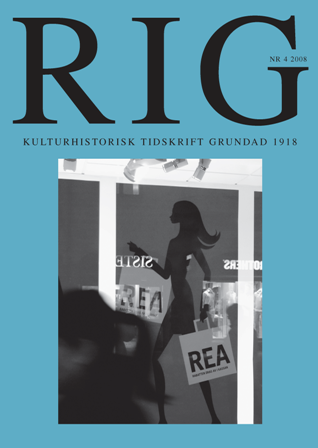Shopping och tomhetskänslor
Abstract
Shopping and Feelings of EmptinessAn important but often neglected aspect of what it means to be a consumer is how one deals with the absent and the unattainable. This article explores two different modes of lacking. The first can be described as the absence of the desired object, as experienced while windowshopping or browsing for goods. The second is made up by feelings of anxiety, regret and emptiness which can surprise the shopper when finding what he/she has been searching for.
It is argued that the act of browsing for commodities in shops and markets not only informs the consumer of what is available for purchase, but also adds significance to the things that are displayed. Window-shopping and browsing includes an element of day-dreaming, and invites the shopper to make an emotional investment into objects.
Simultaneous with the growing knowledge of what is available is an increased awareness of what the shopper presently does not have. Through the act of browsing, this lack also attains an increased significance, leaving the window-shopper with an increasingly articulated void. In this, looking for commodities becomes a way of interacting with the absence of things and of creating and managing voids.
The article argues that the absence of an object often has a greater capacity for absorbing positive meaning than the actual object does. “Not having” easily transforms into “not-yet-having”, lack turns to latency, leaving room not only for discontent but also for hopes and wishes. The significance which is added to the absence of the desired object is key to understanding the lack of fulfilment which is often reported by shoppers after making a purchase. Finally acquiring the desired object entails the risk of losing the wider potential that the absence of the object represented, leaving the shopper with an unexpected sense of loss.

